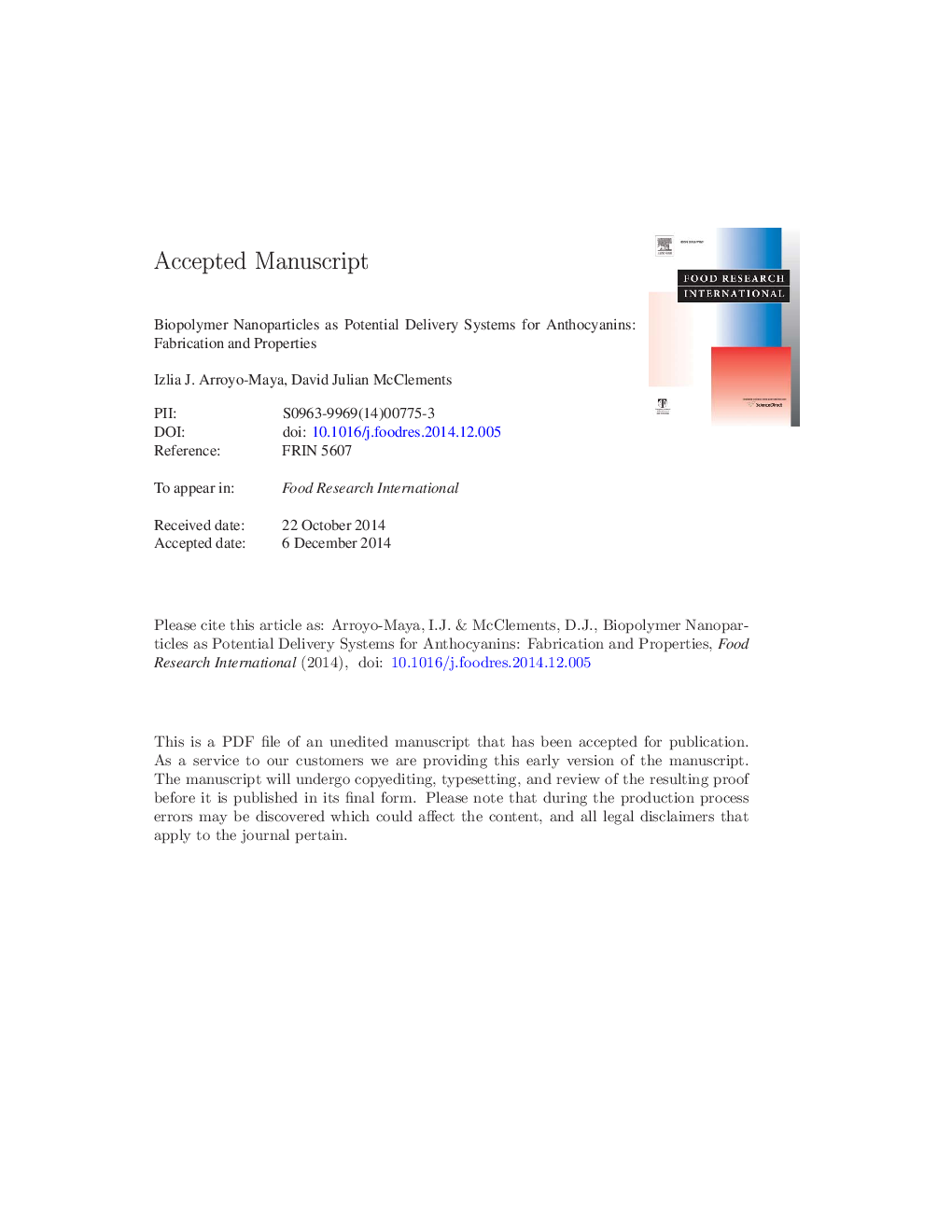| کد مقاله | کد نشریه | سال انتشار | مقاله انگلیسی | نسخه تمام متن |
|---|---|---|---|---|
| 6395538 | 1628477 | 2015 | 31 صفحه PDF | دانلود رایگان |
عنوان انگلیسی مقاله ISI
Biopolymer nanoparticles as potential delivery systems for anthocyanins: Fabrication and properties
دانلود مقاله + سفارش ترجمه
دانلود مقاله ISI انگلیسی
رایگان برای ایرانیان
کلمات کلیدی
موضوعات مرتبط
علوم زیستی و بیوفناوری
علوم کشاورزی و بیولوژیک
دانش تغذیه
پیش نمایش صفحه اول مقاله

چکیده انگلیسی
Biopolymer nanoparticles and microparticles may be used as delivery systems for bioactive compounds in food and pharmaceutical applications. In this study, biopolymer nanoparticles were assembled from whey protein isolate (WPI) and beet pectin (BP) using thermal processing and electrostatic complexation. This approach involved mixing the two biopolymers at pH 5.8, heating (90 °C, 5 min) to induce protein nanoparticle formation and then adjusting the solution to pH 4.0 to promote coating of the protein nanoparticles with pectin. This process led to the formation of relatively small anionic biopolymer nanoparticles (d < 200 nm) at pH 4. The biopolymer particles had a high negative charged from pH 8 to 4.0 but became less anionic at lower pH values. The mean particle diameter was relatively small (d < 200 nm) around pH 4.0 but increased appreciably at lower and higher pH due to particle flocculation. The biopolymer nanoparticles were loaded with an anthocyanin-rich extract. A higher loading efficiency was observed when anthocyanin was added before heating the WPI-BP solution (LE = 55%) rather than after (LE = 35%), which was attributed to increased protein-polyphenol interactions. The encapsulation of anthocyanins within biopolymer particles improved their heat stability. However, encapsulated anthocyanin had a lower antioxidant activity than non-encapsulated anthocyanin, which was attributed to the thermal processing step required during particle fabrication and the binding of anthocyanins to biopolymers within the nanoparticles. Color measurements indicated that the encapsulation of anthocyanin within biopolymer particles did not inhibit its degradation after ascorbic acid addition. Overall, our results show that the encapsulation of anthocyanins within the biopolymer particles fabricated in this study was not particularly effective at improving their antioxidant activity or color stability. Alternative strategies are therefore needed to encapsulate this important color and nutraceutical agent.
ناشر
Database: Elsevier - ScienceDirect (ساینس دایرکت)
Journal: Food Research International - Volume 69, March 2015, Pages 1-8
Journal: Food Research International - Volume 69, March 2015, Pages 1-8
نویسندگان
Izlia J. Arroyo-Maya, David Julian McClements,